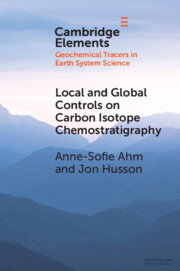Element contents
Local and Global Controls on Carbon Isotope Chemostratigraphy
Published online by Cambridge University Press: 07 March 2022
Summary
- Type
- Element
- Information
- Online ISBN: 9781009028882Publisher: Cambridge University PressPrint publication: 31 March 2022
References
- 3
- Cited by



